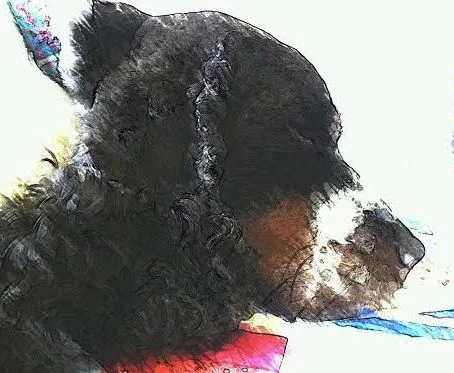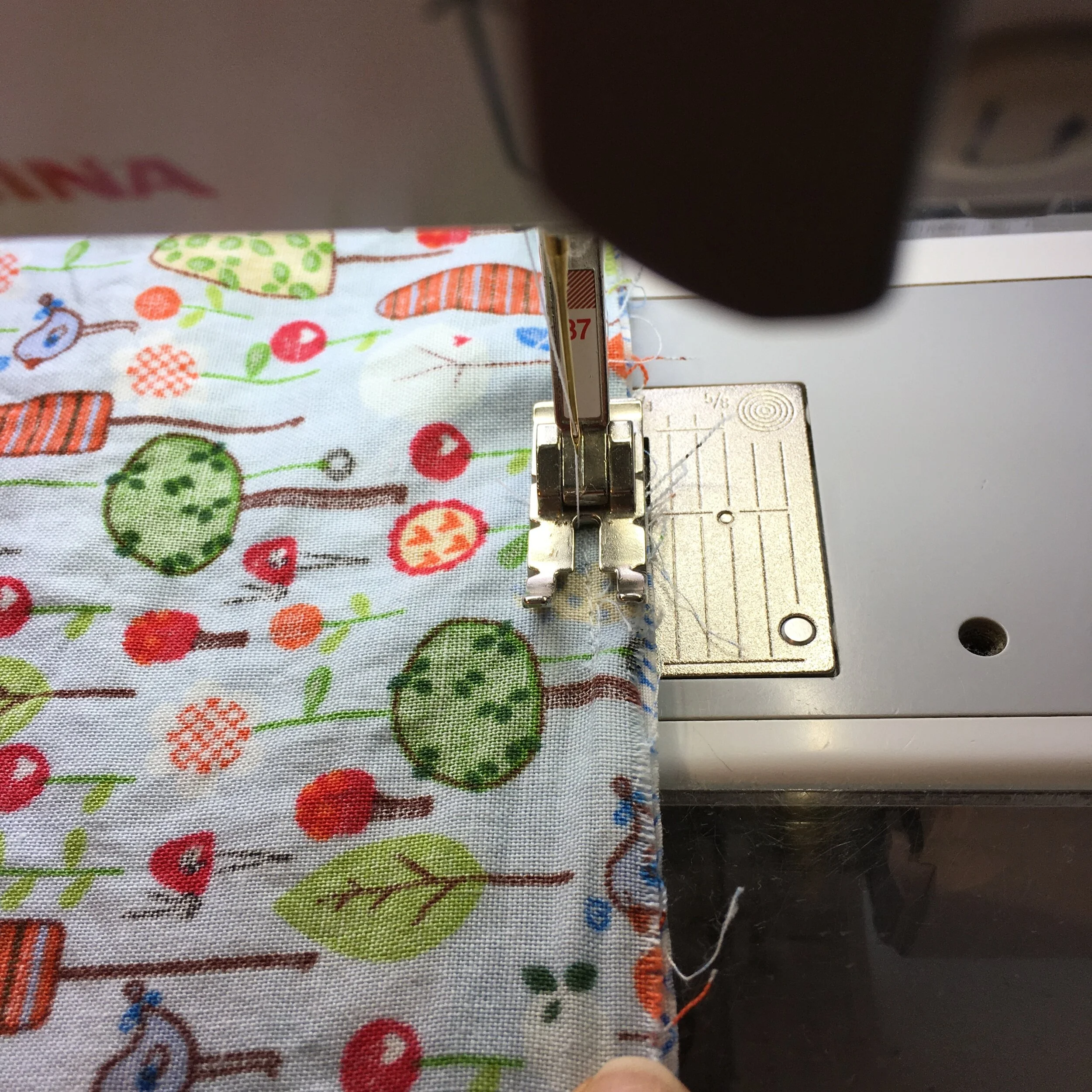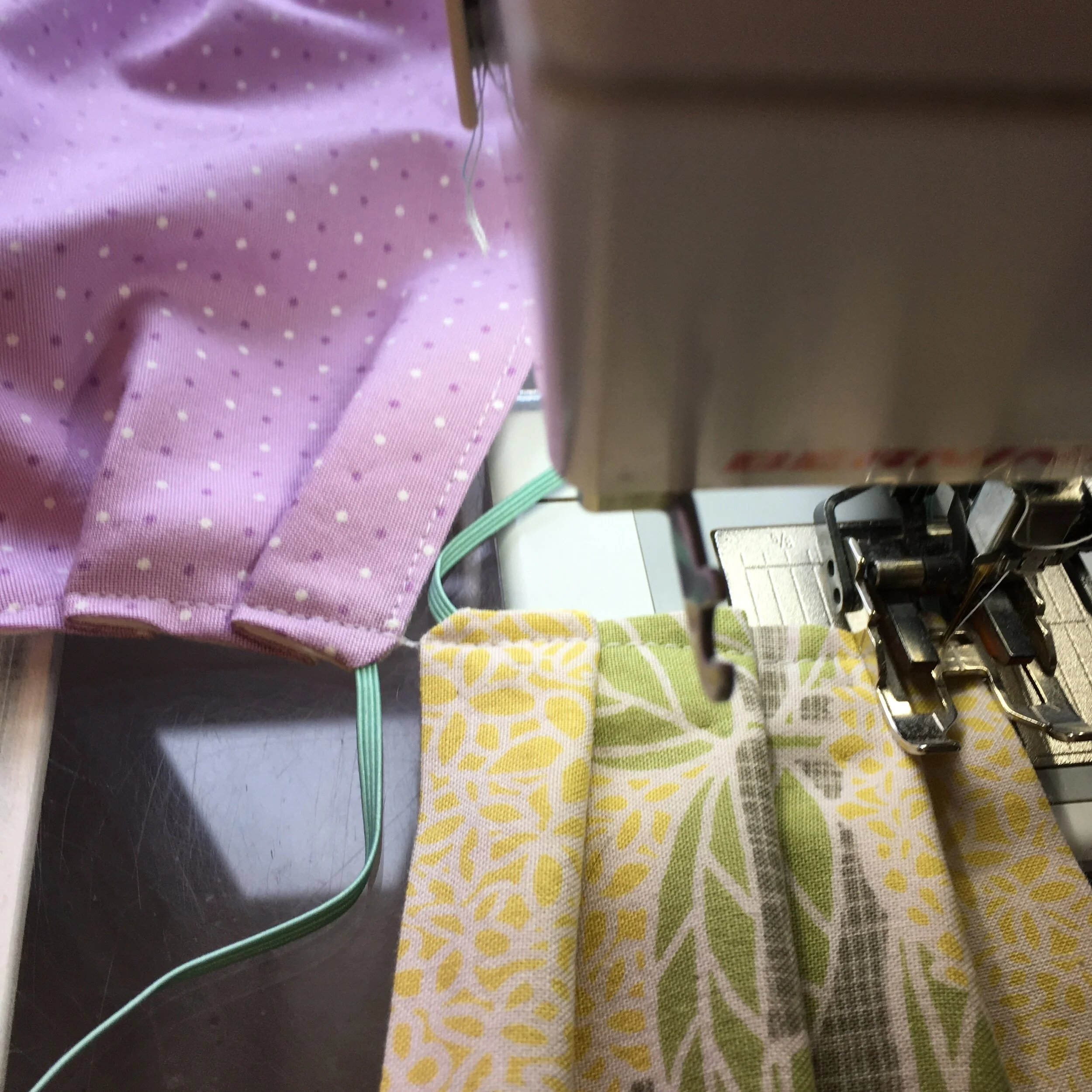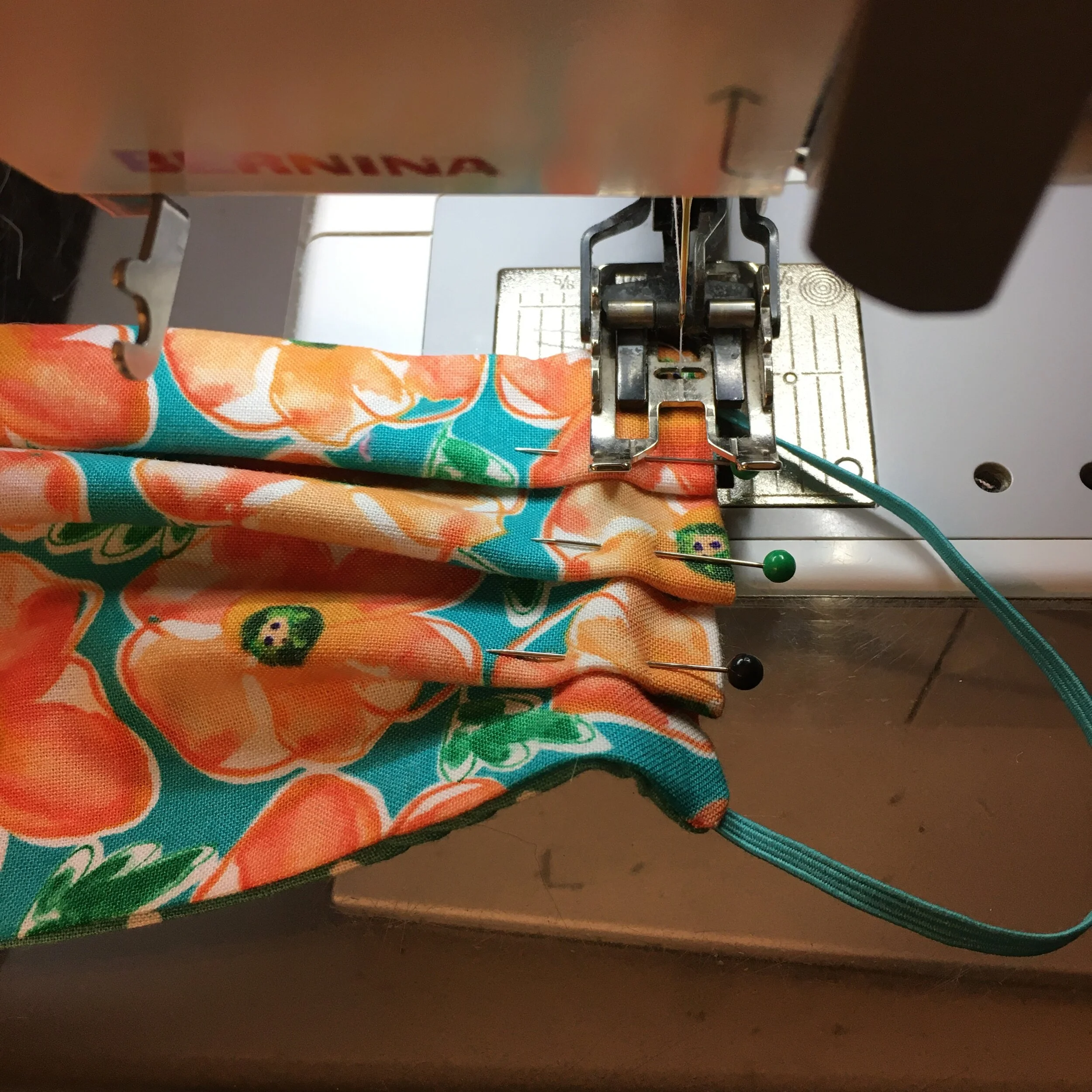Pleated “Deaconess” style Cotton Face Masks
There are lots of cotton face mask patterns, tutorials, and videos available so rather than add another tutorial, I thought I’d share some of the hacks I’ve borrowed from my quilting skills that help speed the process, save thread and up-cycle left over quilt bindings.
I mostly sew the “Deaconess” style rectangular face masks, but do also sew some molded masks. These tips can be adapted to both style masks but are probably most helpful for the pleated masks.
I make masks in big batches of 30 to 50, completing each stage on all the masks before going to the next step.
Using a Quarter Inch Foot—a perfect seam guide
Most sewing machines come with a quarter inch foot. Quilt piecing uses a 1/4 seam. Some quarter inch feet have a raised guide on the right hand side, others create a 1/4 inch seam by stitching along the right hand side of the foot. I’m using the later type of quarter inch foot.
The rectangular masks can be sewing with a 1/4 inch seams. (Be careful if you are sewing molded masks. My molded mask pattern uses the 3/8 inch seam common in industrial sewing).
Sewing a seam with a 1/4 inch foot. This is the Bernina #37 foot.
Chain piecing—saving thread and time
Piecing quilt patches, pairs of patches are run continuously through the sewing machine with a couple of stitches between each patch. The chain of pieced pairs will drop off the back of the sewing table in a lovely pile. This saves a lot of thread and it makes piecing a lot faster because there is no need to cut threads, or stop to hold the threads when you sew a new pair of patches.
I am using “chain sewing” with the masks. Because the masks are stitched around the 4 sides of the mask, you’ll need to cut the masks apart as you sew so that the previous mask doesn’t get in your way. But that turns out to be easy to do. As you turn the corner on the new mask, the previous mask will flip around to the left of your machine and the connecting threads can be snipped. It just takes a second to stop and do that.
Note the thread connection between these two masks. This should be snipped at this point to separate the two masks.
Using a Walking Foot to Edge Stitch the Pleated mask
This is my favorite quilter hack. I found it really challenging sewing over the pleated in the mask with a regular foot. Those pleats are 6 layers of fabric. So I put a walking foot on my machine and suddenly sewing was smooth sailing.
The walking foot helps to pull the piece through on the top, augmenting the pull of the feed dogs under the piece. Walking feet are used to do straight machine quilting.
Edge stitching the pleated mask with a walking foot
Ear Savers from Left over Quilt Bindings—A fun and useful up-cycle
There is almost always some left over binding after a quilt is finished. It’s the perfect width to sew an “ear saver”. If a mask is worn for a long time, the elastic tends to make the back of the ears very sore. The buttons on the ear safer take the pressure from the ear elastic, giving the ears a much needed break.
Cut a binding remnant 13 inches long. Turn the short raw edges under 1/4 inch. Fold the remnant in half and edge stitch all for sides of the binding.
Sew on 2 large buttons. 3/4- 1 inch buttons are perfect.
Ear Saver from made from a quilt binding remnant.
Thank you for sewing face masks, whether for an organization or for your friends and family! I hope some of these tips are useful in your sewing!





